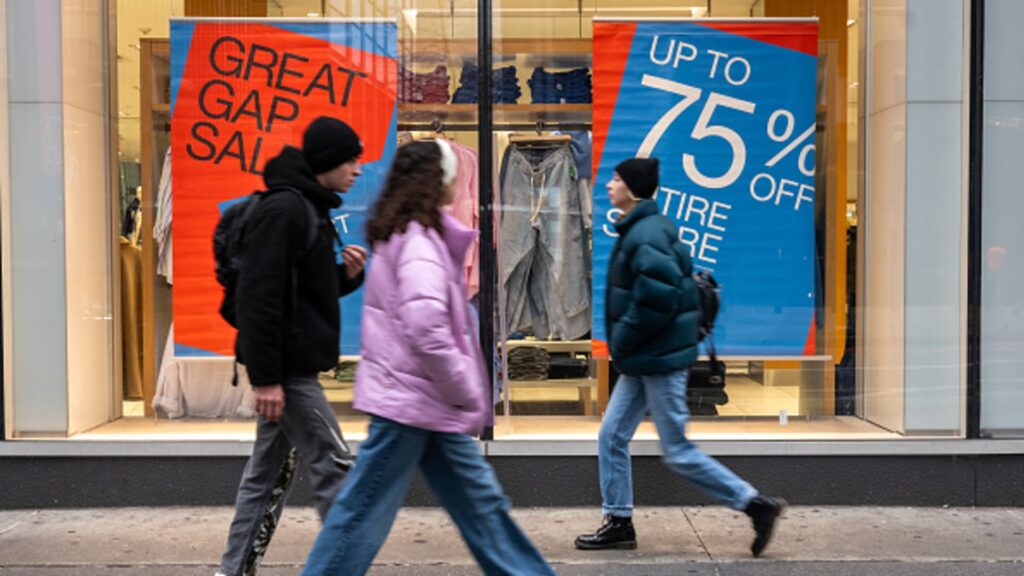People walk by sale signs in the Financial District on the first day back for the New York Stock Exchange (NYSE) since the Christmas holiday on December 26, 2023 in New York City.
Spencer Platt | Getty Images
An important inflation gauge released Friday showed that the rate of price increases cooled as 2023 came to a close.
The Commerce Department’s personal consumption expenditures price index for December, an important gauge for the Federal Reserve, increased 0.2% on the month and was up 2.9% on a yearly basis, excluding food and energy. Economists surveyed by Dow Jones had been looking for respective increases of 0.2% and 3%.
On a monthly basis, core inflation increased from 0.1% in November. However, the annual rate declined from 3.2%. The 12-month rate is the lowest since March 2021.
Including volatile food and energy costs, headline inflation also rose 0.2% for the month and held steady at 2.6% annually.
The release adds to evidence that inflation, while still elevated, is continuing to make progress lower, possibly giving the Fed a green light to start cutting interest rates later this year. The central bank targets 2% as a healthy annual inflation rate.
Markets took little notice of the data, with stock futures indicating little change at the open and Treasury yields mostly lower.
As inflation drifted closer to the Fed’s target, consumer spending increased 0.7%, stronger than the 0.5% estimate. Personal income growth edged lower to 0.3%, in line with the forecast.
The data indicated that consumers are dipping into savings to pay for their expenditures. The personal savings rate fell to 3.7% for the month, down from 4.1% in November.
Within the inflation numbers, prices for goods declined by 0.2% while services prices rose by 0.3%, reversing a trend when inflation began to spike. As the pandemic forced people to stay home more, demand for goods spiked, adding to supply chain problems and exacerbating price increases.
Food prices increased 0.1% on the month while…
Read the full article here





